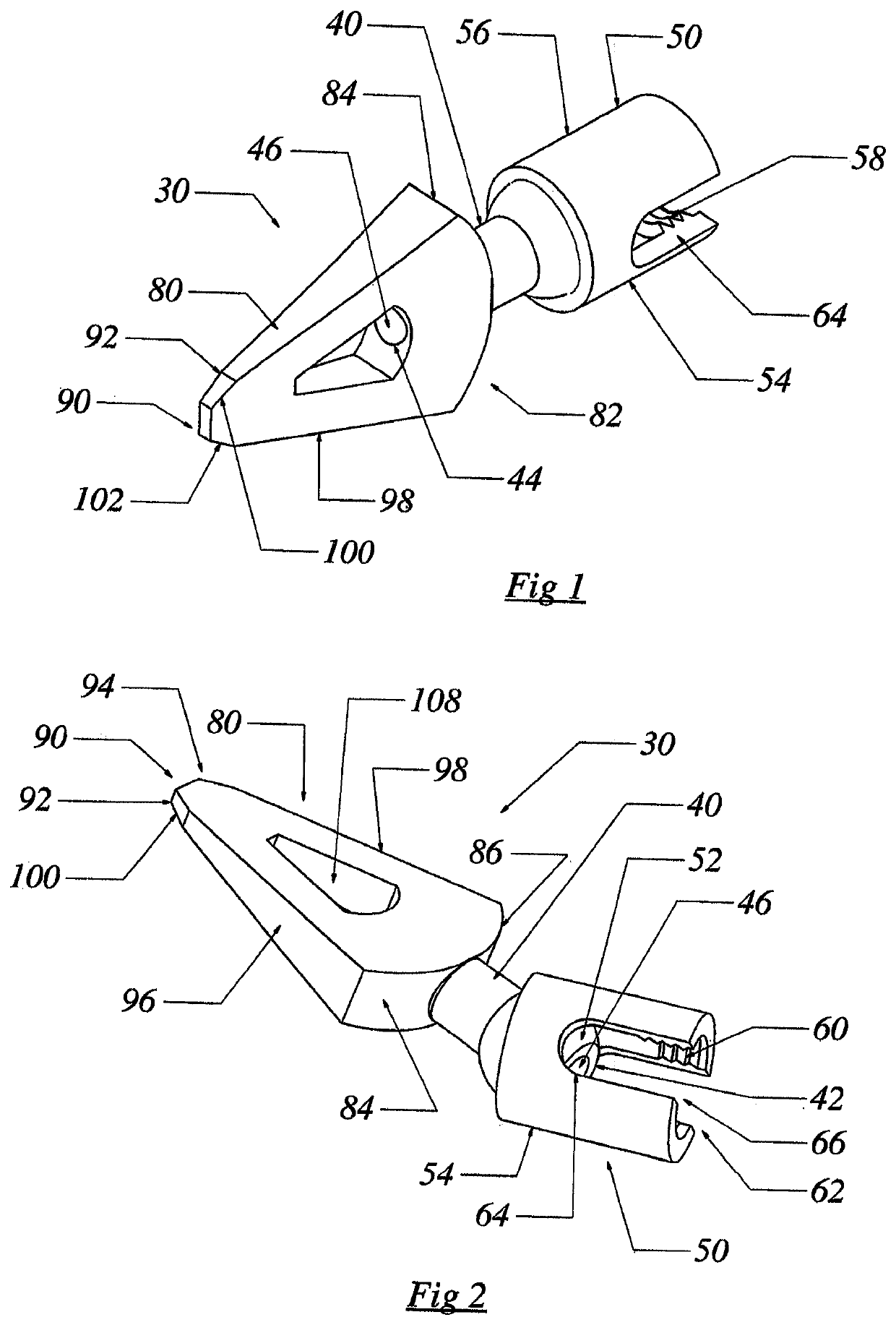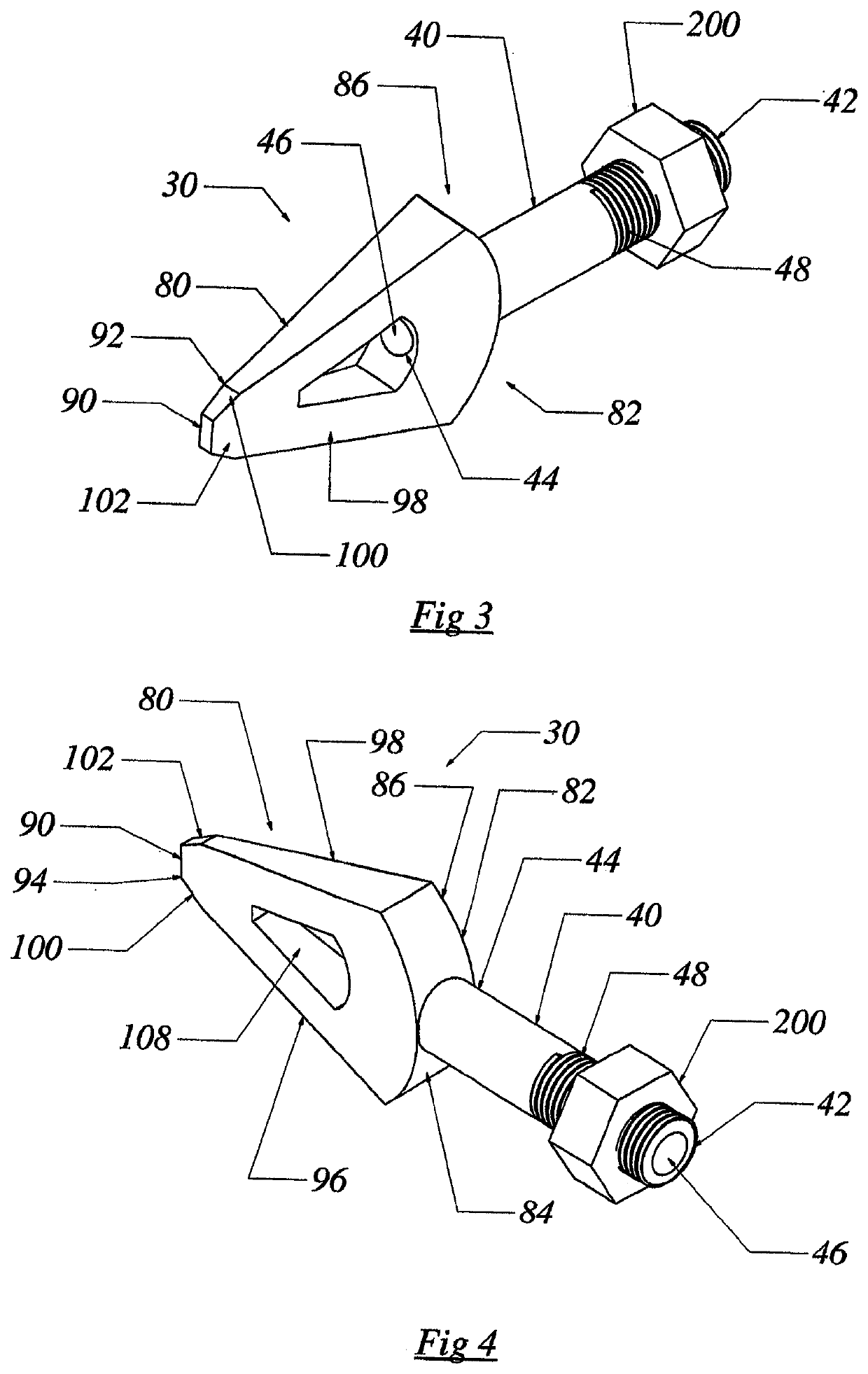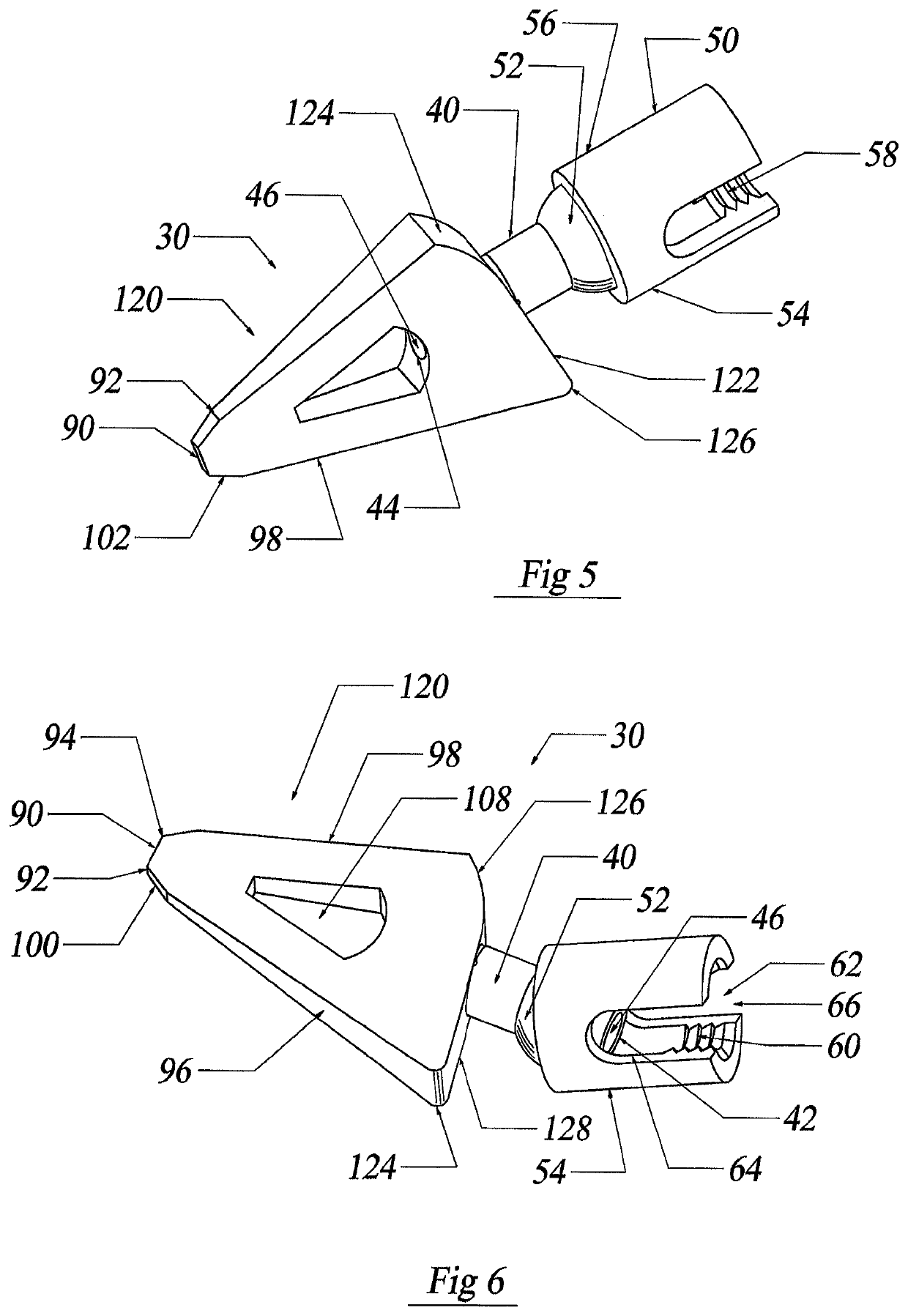Implant for bone
a technology for implants and bones, applied in the field of implants for bones, can solve the problems of increasing the screw length for osteoporotic bones, rarely providing satisfactory resistance to the fixation screw, and reducing the possibility of injury to nearby structures such as arteries, veins and nervous tissues
- Summary
- Abstract
- Description
- Claims
- Application Information
AI Technical Summary
Benefits of technology
Problems solved by technology
Method used
Image
Examples
Embodiment Construction
[0044]Although the disclosure hereof is detailed to enable those skilled in the art to practice the invention, the embodiments published herein merely exemplify the present invention.
[0045]In the most general sense, the present invention is an implant for bone where the implant is adapted for connection with a device distinct from the implant. Among other things, the current invention can be adapted for use with vertebra or other bone tissues. The present implant is particularly adapted for use in the cervical region of the spine. The current invention can be provided with a conduit for transporting biocompatible devices / substances or chemotherapeutic agents, such as adhesives, cameras, cannulas, fiber optics, implants, pharmaceuticals, etc. Dispersion of adhesives from the windows or openings of the implant before closing the surgical wound, reduces the risk of the fastener backing out of the wound prior to the fastener fully interlocking with tissue overgrowth. Polymethymethacryla...
PUM
 Login to View More
Login to View More Abstract
Description
Claims
Application Information
 Login to View More
Login to View More - R&D
- Intellectual Property
- Life Sciences
- Materials
- Tech Scout
- Unparalleled Data Quality
- Higher Quality Content
- 60% Fewer Hallucinations
Browse by: Latest US Patents, China's latest patents, Technical Efficacy Thesaurus, Application Domain, Technology Topic, Popular Technical Reports.
© 2025 PatSnap. All rights reserved.Legal|Privacy policy|Modern Slavery Act Transparency Statement|Sitemap|About US| Contact US: help@patsnap.com



